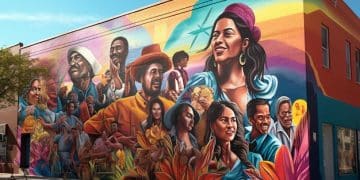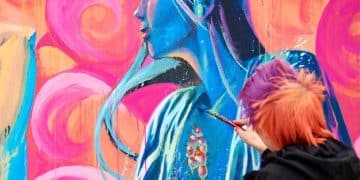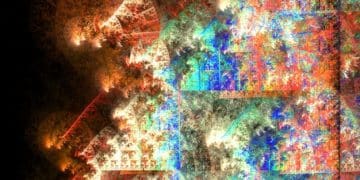Emerging US Graffiti Art Styles for 2025: What’s Next?
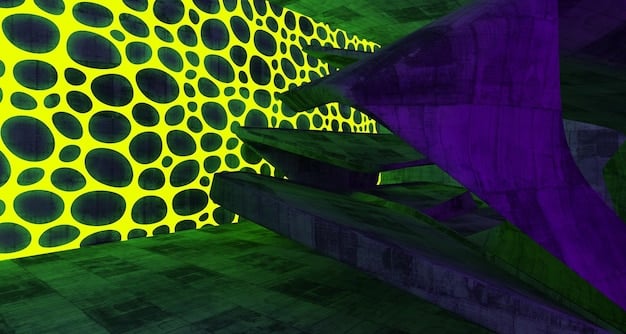
The evolving landscape of US graffiti art in 2025 is marked by a dynamic fusion of digital aesthetics, environmental consciousness, and community engagement, showcasing innovative techniques and a renewed focus on cultural narratives.
As we approach 2025, the urban canvas of the United States continues to evolve, reflecting shifts in culture, technology, and activism. So, what are the emerging styles in US graffiti art for 2025? This exploration aims to uncover the innovative directions artists are taking, moving beyond traditional forms to embrace new mediums, messages, and audience interactions, shaping the future of this vibrant art form.
The Digital Canvas: Blending Virtual with Physical Realities
The integration of digital tools and aesthetics is profoundly reshaping graffiti art. Artists are no longer confined to spray cans; they are utilizing projection mapping, augmented reality (AR), and digital design to create temporary or interactive pieces, pushing the boundaries of what graffiti can be. This shift allows for unprecedented dynamism and engagement, transforming static walls into animated canvases. The influence of digital aesthetics can be seen in sharp lines, pixelated patterns, and vibrant, almost luminous color palettes that mimic screen displays.
Augmented Reality and Interactive Murals
Augmented reality is quickly gaining traction, allowing viewers to experience layers of digital content superimposed onto physical graffiti through their smartphones or tablets. This technology can transform a static piece into an animated narrative, display hidden messages, or even play accompanying soundscapes. For artists, it opens up new avenues for storytelling and engagement, creating a multi-sensory experience that transcends traditional visual art. This interactive element fosters a deeper connection between the artwork, the artist, and the audience.
- Viewers interact with art via smartphone apps.
- Hidden layers of animation and sound are revealed.
- Creates dynamic, evolving urban art experiences.
Projection Mapping and Temporary Installations
Projection mapping offers artists the ability to “paint” with light, transforming buildings and unconventional surfaces into temporary murals. This method is gaining popularity for its ability to create large-scale, impactful pieces that can be easily changed or removed, fitting the ephemeral nature often associated with street art. It also minimizes property damage concerns, allowing for exhibitions in spaces previously inaccessible to traditional graffiti. These installations often feature intricate patterns, fluid movements, and vibrant colors that play with the architectural features of the projection surface, creating a truly unique spectacle.
The digital realm also influences the design principles of physical graffiti. Artists experiment with glitch art, cyberpunk aesthetics, and data visualization. These styles reflect a commentary on modern society’s digital immersion, exploring themes of surveillance, connectivity, and virtual identities within civic spaces. The seamless blend of technology and traditional techniques suggests a future where graffiti art is not just seen but experienced through multiple lenses. The rapid pace of technological advancement means artists are constantly discovering new ways to incorporate digital elements, offering fresh perspectives on urban art.
Eco-Conscious Graffiti: Art as an Environmental Statement
As global environmental awareness grows, so does its reflection in graffiti art. Artists are increasingly using their platforms to highlight ecological issues, employing sustainable materials and creating pieces that intertwine with the natural environment. This emerging style goes beyond mere representation; it is about active participation in the dialogue surrounding climate change, pollution, and urban sustainability.
Sustainable Materials and Techniques
The search for environmentally friendly alternatives to traditional spray paints is driving innovation. Artists are experimenting with moss graffiti, biodegradable paints, and reclaimed materials to minimize environmental impact. Moss graffiti, for example, uses live moss to create green murals, which are entirely natural and absorb carbon dioxide. This approach aligns artistic expression with ecological responsibility. The public’s positive reception to such initiatives further encourages artists to explore these methods.
- Use of moss, clay, or biodegradable paints.
- Minimizes chemical runoff and environmental damage.
- Promotes sustainable artistic practices.
Nature-Inspired Themes and Urban Greenery
Thematically, eco-conscious graffiti often features natural elements like flora, fauna, and landscapes, juxtaposed with urban decay or industrial settings. These works serve as visual reminders of nature’s resilience and vulnerability. Some artists integrate their pieces directly into urban greening projects, enhancing public parks or community gardens with art that complements and celebrates natural spaces. The deliberate choice of location and subject matter amplifies the environmental message, converting overlooked urban areas into vibrant, thought-provoking spaces. This symbiotic relationship between art and nature invites viewers to reflect on their own connection to the planet.
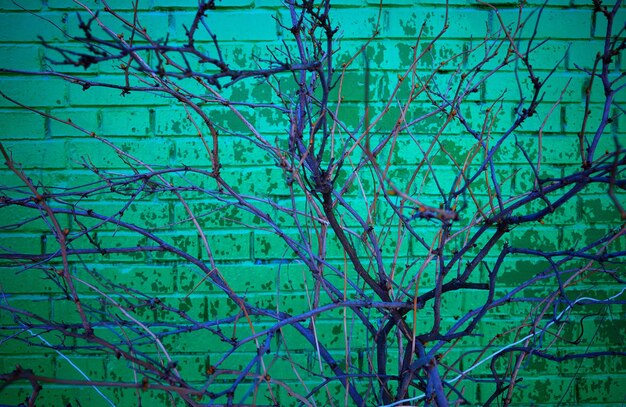
This movement signifies a growing responsibility among graffiti artists, transforming their practice into a form of environmental advocacy. It challenges the conventional perception of graffiti as disruptive, instead positioning it as a force for positive environmental change and urban beautification. The innovative use of sustainable materials not only reduces ecological footprints but also expands the artistic palette, proving that impactful art can also be responsible art.
Hyper-Regionalism: Celebrating Local Narratives and Identities
In an increasingly globalized world, a counter-trend is emerging in US graffiti art: a hyper-focus on local narratives, histories, and cultural identities. Artists are drawing inspiration directly from their immediate surroundings, creating works that are deeply resonant with the communities they inhabit. This style helps reinforce local pride and provides a visual voice for marginalized histories and contemporary issues. It’s a departure from universal themes, emphasizing the unique character and stories of specific neighborhoods and cities.
Community-Specific Iconography and Symbolism
Artists delve into local folklore, historical events, community figures, and everyday life to inform their work. This results in murals and pieces that are rich with symbolism understandable to those familiar with the area. For instance, a piece in New Orleans might incorporate elements of jazz music or voodoo iconography, while one in Detroit might reflect its industrial heritage or resilience. This intentional specificity makes the art feel authentic and personal to the residents. This authenticity is key to engaging local audiences who recognize themselves and their stories within the artwork.
- Incorporates local history, folklore, and figures.
- Uses symbols and motifs specific to a community.
- Fosters a sense of local pride and belonging.
Narrative Storytelling Through Murals
Large-scale murals are becoming powerful vehicles for narrative storytelling, depicting community struggles, achievements, and aspirations. These murals often involve extensive community input, ensuring that the stories told are accurate and representative. This collaborative process transforms the artwork from merely an aesthetic addition into a shared cultural asset. Such works not only beautify urban spaces but also function as visual archives, preserving cultural memory and fostering intergenerational dialogue. The complexity of these narratives often requires multiple viewing experiences to fully appreciate the depth of the stories presented.
The rise of hyper-regionalism in graffiti art reflects a broader societal interest in authenticity and local identity. It provides a powerful antidote to homogenization, celebrating the rich tapestry of cultures that make up the United States. By rooting their art in specific places and stories, artists are creating works that are not only visually compelling but also deeply meaningful and enduring. This style emphasizes the unique cultural contributions of individual communities, turning urban art into a testament to local diversity.
Abstract Expressionism’s Return: Emotion and Form Unleashed
While figurative and narrative styles have dominated graffiti for years, 2025 is witnessing a resurgence of abstract expressionism. Artists are exploring pure form, color, and gesture, using walls as canvases for raw emotion and spontaneous creation. This return to abstraction suggests a desire among artists to break free from literal representation and engage viewers on a more visceral, emotional level. It also allows for greater experimentation with techniques and materials, pushing the boundaries of what graffiti can visually communicate.
Dynamic Gestural Marks and Color Fields
The new wave of abstract graffiti is characterized by bold, confident gestural marks reminiscent of traditional action painting. Artists use large sweeps of color, drips, and splatters to convey energy and movement. Color fields, often vibrant and clashing, create a sense of depth and emotional resonance. These works are less about deciphering a specific image and more about experiencing the interplay of form and hue. The scale of these pieces often amplifies their impact, drawing viewers into a sensory experience rather than a cognitive one. The use of varied textures, achieved through different spray nozzles and application techniques, adds another layer of complexity.
- Emphasizes emotion through color and form.
- Features bold, spontaneous gestural marks.
- Creates immersive, non-representational experiences.
Deconstruction and Layering Techniques
Many abstract graffiti artists are employing deconstruction, taking elements of traditional graffiti lettering or imagery and breaking them down into their fundamental components. Layers of paint, often translucent or partially obscured, create a sense of history and depth, revealing fragments of earlier marks or colors. This technique alludes to the transient nature of street art and the constant evolution of urban landscapes. The deliberate process of layering and revealing adds a meditative quality to the creation, with each layer contributing to the final complex composition. This approach often results in visually intricate pieces that invite prolonged observation.
This resurgence of abstract expressionism in graffiti indicates a maturation of the art form, where artists are confident enough to explore non-representational avenues while maintaining the raw energy and immediacy inherent to street art. It challenges viewers to engage with art without a clear narrative, encouraging subjective interpretation and emotional response. This shift reflects a craving for artistic freedom and a deeper exploration of the medium’s inherent qualities.
The Rise of Micro-Murals and Intentional Placement
While large-scale murals continue to be prominent, 2025 is seeing a notable trend toward micro-murals and highly intentional placement of smaller pieces. Artists are exploring overlooked nooks, utility boxes, and discarded objects, transforming them into miniature works of art. This approach is subtle, often requiring viewers to actively seek out the art, fostering a sense of discovery and intimacy. It’s a move away from the grand statement, favoring a more personal and integrated interaction with urban spaces.
Utilizing Urban Furniture and Unconventional Surfaces
Micro-murals appear on everything from mailboxes and lampposts to electrical boxes and forgotten benches. These small, often intricate pieces blend seamlessly into the urban fabric, surprising unsuspecting passersby. The choice of surface dictates the size and sometimes the medium, leading to creative solutions that interact with the object’s form. This guerrilla-style placement challenges traditional gallery spaces, bringing art directly to the public in unexpected pockets of the city. The element of surprise is a powerful tool, converting mundane urban elements into unexpected artistic displays.
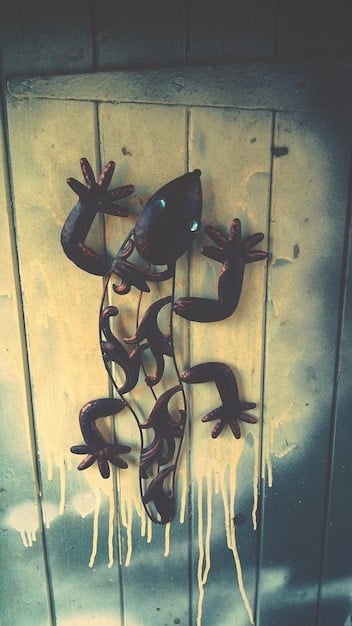
Narrative in Small Scale and Discovery
Despite their small size, many micro-murals tell compelling stories or convey powerful messages. Their intentional placement often adds another layer of meaning, interacting with the surrounding environment or history of the location. The act of discovery becomes part of the art experience, as viewers stumble upon these hidden gems, fostering a deeper engagement with their urban environment. This intimacy allows artists to explore themes that might be lost on a larger, more public scale, creating a sense of shared secret between the art and its discoverer. The subtle nature of these pieces encourages closer inspection and more thoughtful engagement with the artwork.
The trend of micro-murals highlights a sophisticated approach to urban art, demonstrating how even small interventions can have a significant impact on perception and interaction with public spaces. It speaks to a refined understanding of the urban landscape, where every surface becomes a potential canvas for artistic expression. This trend reminds us that art doesn’t always need to be monumental to be meaningful, often, the smallest gestures can leave the most lasting impressions.
Social Commentary and Activism: Art as a Voice for Change
Graffiti has always had a rebellious and protest-oriented streak, but in 2025, this aspect is more pronounced and nuanced. Artists are leveraging their art to address pressing social justice issues, political themes, and humanitarian crises. This goes beyond simple messaging; it involves complex visual narratives that provoke thought, empathy, and dialogue. The urgency of current global events is driving artists to use their voice more directly and forcefully, positioning graffiti as a critical tool for social change.
Direct Messaging and Symbolic Representation
Artists are employing a range of techniques, from bold, explicit text-based pieces that deliver direct messages to intricate symbolic imagery that requires deeper interpretation. Topics include racial justice, economic inequality, climate action, immigration, and LGBTQ+ rights. The visual language chosen often reflects the urgency and gravity of the issues, using stark contrasts, powerful symbolism, and emotional resonance to amplify the message. These pieces act as public announcements, initiating conversations and raising awareness. The use of easily recognizable symbols ensures the message reaches a broad audience, even internationally.
- Addresses pressing social and political issues.
- Uses direct text or powerful symbolism.
- Aims to provoke thought and encourage dialogue.
Participatory and Collaborative Activism
A growing number of activist graffiti projects involve community participation. Workshops and collective painting sessions allow affected communities to contribute their voices and perspectives directly to the artworks. This collaborative approach enhances the power and authenticity of the message, making the art a true reflection of collective sentiment and a tool for collective action. Such projects foster solidarity and empower marginalized groups, transforming shared spaces into communal forums for expression and resistance. These mural projects often become focal points for local activism.
This emerging style underscores graffiti’s enduring role as a public forum for dissent and advocacy. In 2025, artists are not merely commenting on society; they are actively shaping the narrative, advocating for change, and empowering communities through their powerful visual statements. The immediacy and accessibility of street art make it an unparalleled medium for social commentary, ensuring that these vital messages reach a broad and diverse audience. This evolution solidifies graffiti’s place as a potent force in contemporary activism.
Evolving Techniques and Material Innovation
Innovation in graffiti art is not just about themes or concepts; it also extends to the very tools and materials artists employ. In 2025, there’s a significant drive towards developing and adopting novel techniques and materials that push the boundaries of what’s possible with urban art. This includes advancements in spray paint technology, experimental mediums, and methods that defy traditional application.
Advanced Spray Paint Chemistry and Effects
Manufacturers are responding to artists’ demands for greater versatility and longevity in spray paints. We’re seeing new formulations that offer enhanced adhesion, UV resistance, and a wider spectrum of effects, including iridescent, metallic, and glow-in-the-dark properties. These advancements allow for more complex visual textures and durability, ensuring that pieces can withstand environmental elements for longer periods. The finer control offered by new nozzle technologies also enables artists to achieve unprecedented detail and subtlety in their work, moving beyond the traditional rough aesthetic of graffiti.
- New paints with enhanced durability and effects.
- Improved nozzle technology for finer control.
- Allows for more complex textures and details.
Experimental Media and Hybrid Approaches
Beyond traditional cans, artists are incorporating an array of experimental media. This includes the use of industrial paints, pigments mixed with various binders, and even elements like fire or natural dyes to create unique effects. Hybrid approaches, where graffiti is combined with sculpture, installation art, or digital projections, are also gaining traction. These cross-disciplinary explorations challenge the definition of graffiti, integrating it into broader contemporary art movements. The fusion of diverse materials creates a multi-layered sensory experience, pushing the expressive potential of urban art. This blending of disciplines fosters truly innovative artistic outputs.
The continuous evolution of techniques and materials ensures that graffiti art remains a dynamic and ever-surprising field. Artists are constantly experimenting, pushing the limits of their tools to create increasingly sophisticated and impactful works. This commitment to innovation is a hallmark of the scene in 2025, demonstrating a vibrant willingness to adapt and redefine the art form. This forward-thinking approach means the urban canvas will always offer something new and unexpected.
| Key Trend | Brief Description |
|---|---|
| 🎨 Digital Integration | Blending AR, projection mapping, and digital aesthetics with physical art. |
| 🌿 Eco-Conscious Art | Using sustainable materials and themes to address environmental issues. |
| 🗺️ Hyper-Regionalism | Focusing on local stories, history, and community identity. |
| ✊ Social Activism | Graffiti as a powerful voice for social justice and change. |
Frequently Asked Questions About Emerging Graffiti Styles in 2025
▼
Technology is revolutionizing graffiti by introducing augmented reality, projection mapping, and digital design tools. These innovations allow artists to create interactive, dynamic, and temporary installations, blurring the lines between physical and virtual art. It offers new avenues for storytelling and deeper audience engagement.
▼
Yes, eco-conscious graffiti is a growing trend. Artists are experimenting with sustainable materials such as moss graffiti, biodegradable paints, and reclaimed resources. This movement reflects a commitment to environmental responsibility, creating art that not only beautifies but also promotes ecological awareness and sustainability in urban spaces.
▼
Hyper-regionalism in graffiti art signifies a strong focus on local narratives, histories, and cultural identities. Artists draw inspiration from their immediate surroundings, incorporating community-specific iconography, folklore, and historical events. This approach fosters local pride and creates deeply resonant, authentic artworks for their specific communities.
▼
Indeed, abstract expressionism is seeing a resurgence in graffiti art. Artists are exploring pure form, color, and gesture, using dynamic marks and deconstruction techniques. This reflects a desire to convey raw emotion and engage viewers on a more visceral level, moving beyond literal representation and pushing artistic boundaries.
▼
Graffiti artists are increasingly using their platforms for social commentary and activism. They address pressing issues like racial justice, economic inequality, and climate action through direct messaging and powerful symbolism. Community involvement in these projects enhances their impact, transforming urban art into a potent tool for advocacy and collective action.
Conclusion
The landscape of US graffiti art in 2025 is a vibrant testament to its enduring adaptability and relevance. From the fusion of digital innovation with physical spaces to a renewed commitment to environmentalism, hyper-regional narratives, and powerful social commentary, the emerging styles reflect a dynamic and complex urban tapestry. Artists continue to push technical boundaries, exploring new mediums and techniques, ensuring that graffiti remains a captivating and evolving force in contemporary art. This ongoing transformation underscores the art form’s capacity to reflect, provoke, and inspire, continually redefining its place in the public consciousness.

